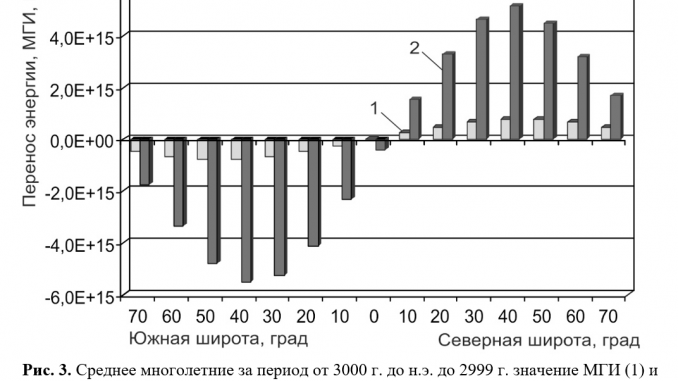
Valery Mikhailovich Fedorov [0000-0003-2305-7408]
Denis Maksimovich Frolov [0000-0002-0307-8175]
Ekaterina Valeryevna Fedorova [0000-0001-8054-2763]
Lomonosov Moscow State University, Moscow, 119991, Russia
E-mail: fedorov.msu@mail.ru
Abstract. Based on the calculations of the Earth’s insolation, changes in the annual meridional insolation gradient were determined in the period from 3000 BC to 2999. Changes in the meridional insolation gradient are associat-ed with changes in the angle of inclination of the Earth’s rotation axis. Based on the regression model, it is shown that the trends of changes in the near-surface air temperature and ocean surface temperature (the temperature re-gime of the global climate) by 69.3-84.1% are determined by the insolation contrast. The insolation contrast generically (by radiative heat source and sink regions) reflects long-term changes in the meridional gradient of insola-tion, which regulates the intensity of meridional radiative heat transfer in the ocean–atmosphere system.
Keywords: solar radiation, meridional transport, insolation contrast, near-surface air temperature, ocean surface temperature, regression model
